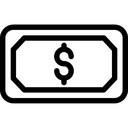
A fanstatic trip
Heritage
escape to Myanmar
Hightlight
- 12-day tour to discover the most famous places majestic Myanmar.
- Yangon – Visit the iconic Shwedagon Pagoda, explore colonial-era streets, and take a ferry to Dhala township.
- Mandalay – Enjoy panoramic views from Mandalay Hill, see the “World’s Biggest Book” at Kuthodaw Pagoda, and walk the historic U Bein Bridge.
- Irrawaddy River Cruise – Take a scenic boat ride to Mingun and explore the massive unfinished pagoda and the world’s largest ringing bell.
- Bagan – Discover thousands of ancient temples, visit a traditional lacquerware workshop, and witness a breathtaking sunset over the temple plains.
- Mount Popa – Climb 777 steps to this sacred pilgrimage site with stunning views of the Myingyan Plain.
- Inle Lake – Explore stilt-house villages, watch leg-rowing fishermen, visit floating gardens, and experience local crafts like lotus silk weaving.
- Cultural Immersion – Wander through lively markets, meet local artisans, and experience authentic Myanmar life in rural villages.
- Domestic flights, land transfers, tickets, accommodation Most meals included.
- Knowledgeable, English-speaking tour guide.
Introduction
12-Day Myanmar Discovery Tour
Experience the best of Myanmar on this immersive 12-day journey. Explore Yangon’s colonial landmarks, bustling markets, and iconic Shwedagon Pagoda before flying to Mandalay to visit sacred sites like Mahamuni Pagoda and the famous U Bein Bridge. Cruise along the Irrawaddy River to discover the ancient wonders of Mingun and Sagaing, then continue to Bagan, home to stunning temples, vibrant markets, and the sacred Mount Popa.
Next, head to the serene Inle Lake, where you’ll witness floating gardens, traditional villages, and unique leg-rowing fishermen. Visit the ancient Indein Pagoda complex and trek through picturesque landscapes before flying back to Yangon. Conclude your adventure with a ferry trip to Dhala, exploring its rural charm by trishaw, and enjoy a final day at leisure before departing.
Itinerary
Day 1. Yangon (arrival)
Arrival in Yangon.
Transferred to hotel. Explore every corner of Sule Pagoda. Evening great sunset at marvellous Shwedagon pagoda.
- Overnight at hotel in Yangon.
- L
Day 2. Yangon (city tour)
After breakfast, explore Yangon’s historic downtown, passing colonial landmarks, bustling markets, and religious sites like Sule Pagoda and Sri Kali Temple. Visit Kyaukhtatgyi Pagoda’s reclining Buddha, then enjoy scenic views at Kandawgyi Park. End the day at the iconic Shwedagon Pagoda, best visited at sunset for its breathtaking golden glow.
- Overnight in Yangon.
- B,L
Day 3: Yangon → Mandalay
Start early with breakfast at your hotel or a takeaway box before transferring to Yangon airport for your flight to Mandalay. Upon arrival, meet your guide and driver for a city tour, beginning with panoramic views from Mandalay Hill. Visit Kyauktawgyi Pagoda’s massive marble Buddha, Kuthodaw Pagoda’s “World’s Biggest Book,” and the intricately carved Shwenandaw Monastery. After hotel check-in, continue to Mahamuni Pagoda, home to a revered gold-covered Buddha, and explore local craft workshops. In the afternoon, visit Amarapura’s Mahagandayon Monastery before ending the day at U Bein Bridge, where the sunset creates a magical scene. Return to Mandalay for the night.
- Overnight in Mandalay.
- B,L
Day 4: Mandalay (visit surrounding)
Take a private boat from Mandalay Pier for a scenic trip down the Irrawaddy River to Mingun. Explore the unfinished Mingun Paya, split by an earthquake, and enjoy views from its top. Visit the striking white Hsinbyume Pagoda, inspired by Buddhist cosmology, and see the massive 90-ton Mingun Bell. Cross the Irrawaddy to Sagaing, Myanmar’s spiritual center, home to 600 pagodas and 3,000 monks. Visit key pagodas like Swan Oo Pon Nya Shin, U Min Thone Sae, and Shin Pin Nan Gyaing.
- Overnight in Mandalay.
- B,L
Day 5: Mandalay → Bagan
After your breakfast at hotel, be free until our driver and guide pick you up to Bagan. It takes about 4 hours of driving.
Upon arrival at your hotel in Bagan, check in and enjoy your leisure time.
- Overnight in Mandalay.
- B,L
Day 6: Bagan (Sightseeing)
Visit the lively Nyaung Oo Market before exploring Old Bagan, starting with the iconic Shwezigon Pagoda. Travel through tree-lined roads to a village for a glimpse of local life, then visit lesser-known monuments based on your interests. In the afternoon, stop by a traditional lacquer workshop before heading to the stunning Ananda Temple. Pass Thatbyinnyu, Dhammayangyi, and Sulamani temples, then end the day with a breathtaking sunset view over Bagan.
- Overnight in Bagan.
- B,L
Day 7: Bagan (Popa Mount)
Drive 50 km (1.5 hours) to Mount Popa, an extinct volcano and a major pilgrimage site, home to Myanmar’s sacred “nats.” Climb 777 steps for breathtaking views over the Myingyan Plain. On the return to Bagan, stop at a village to see traditional palm wine and molasses production.
- Overnight in Bagan.
- B,L
Day 8: Mandalay → Heho
This morning, transfer to the airport for your flight to Heho, then continue to Nyaung Shwe, stopping at rural workshops for Shan paper and handcrafted umbrellas. Board a private boat to explore Inle Lake, passing stilt villages, leg-rowing fishermen, and floating gardens. Visit Phaung Daw Oo Pagoda, home to sacred Buddha images, and explore local crafts like lotus silk weaving, cigar making, and blacksmithing. Return by boat to your hotel.
- Overnight in Inle Lake.
- B,L
Day 9: Heho: Inle Lake boat trip
After breakfast, visit the lake’s rotating morning market, a hub for locals and traders. Take a boat to Indein village, stroll through its ruins, and climb to a hilltop Buddha shrine with stunning views. Explore the Indein Pagoda complex, then trek 45 minutes to Sae Ma village, passing through bamboo groves and scenic landscapes. On the return boat ride, stop at Inthar Heritage House (time permitting) to learn about local culture. End the day with a transfer back to your hotel.
- Overnight in Inle Lake.
- B,L
Day 10: Heho → Yangon
After your breakfast at hotel, our driver will pick you up and take you to Heho Airport for your flight back to Yangon.
Upon arrival at Yangon airport, our driver will take you to your hotel. Enjoy your leisure time and explore Yangon on your own.
- Overnight in Yangon.
- B,L
Day 11: Yangon
From your hotel, head to Pansodan Jetty to board a local ferry to Dhala, a charming township without a bridge connection to Yangon. Experience the lively ferry market before exploring Dhala by trishaw, visiting its colorful market, Buddhist temples, and rural neighborhoods. Enjoy plenty of photo opportunities and a drink at a local tea shop while admiring Yangon’s historic skyline. Return by boat around midday, with the rest of the day at your leisure.
- Overnight in Yangon.
- B
Day 12: Yangon: Departure
Morning, breakfast at hotel. Spend your leisure time in the city until we transfer you to airport for your departure flight home.
End of the tour!
Price
$1,850
This price is based on 3 star hotels and small group tour. The tour is upgradable.
| Hotel upgrade | Cost |
| 4 star | $360 |
| 5 star | $780 |
| 5 star+ | $1140 |
| Tour upgrade | Cost |
| Private Tour You only | Group of 2 $660 Group of 8+ $360 |
| Private+ Top class | $960 |
INCLUSION
 All flights in the tour.
All flights in the tour.
 Hotel & accommodation
Hotel & accommodation
 Meals (B,L,D = Breakfast, Lunch, Dinner).
Meals (B,L,D = Breakfast, Lunch, Dinner).
 Transfer vehicle.
Transfer vehicle.
 English speaking guide.
English speaking guide.
 Entrance and sightseeing tickets.
Entrance and sightseeing tickets.
EXCLUSION
 Drinks.
Drinks.
 Tips.
Tips.
 Personal expenses.
Personal expenses.
 International flights.
International flights.
SINGLE SUPPLEMENT:
May be applied with solo traveler.



































